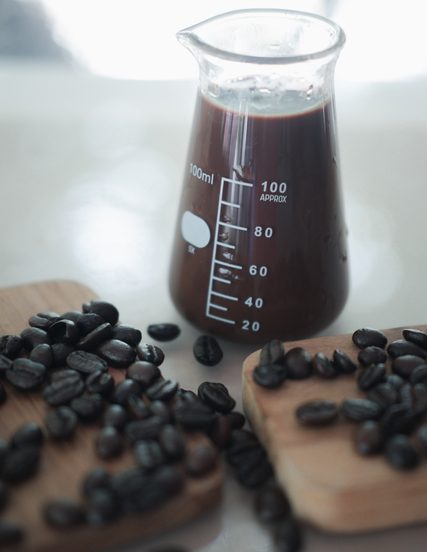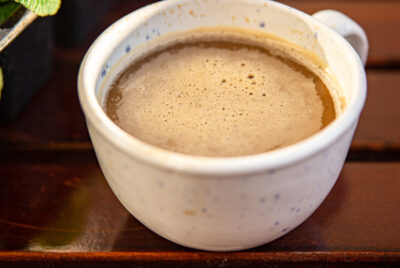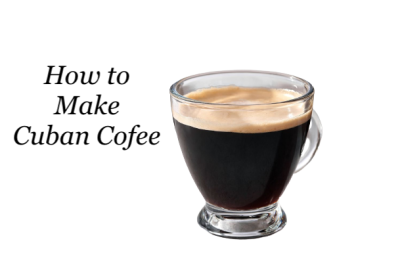How Many Ounces in a Cup of Coffee? Examining the Factors
Coffee lovers often find themselves wondering about the precise measurements for brewing the perfect cup of coffee. One common question that arises is “How many ounces in a cup of coffee?” In this article, as an avid coffee enthusiast and advisor, I will provide you with helpful suggestions and reasons for understanding coffee measurements and achieving the ideal cup of coffee.
When it comes to brewing coffee, understanding the measurements involved is crucial to achieving the perfect balance of flavor, strength, and consistency. Whether you’re a casual coffee drinker or a passionate aficionado, grasping the concepts of coffee measurements will elevate your brewing game.
Let’s dive deeper into the world of coffee measurements and explore why they matter.
Volume-Based Measurement: Ounces and Cups
Coffee is typically measured in volume, with ounces and cups being the primary units used. These measurements provide a standardized way to quantify the amount of coffee and water needed for brewing. Understanding how these measurements relate to each other is key to brewing a delicious cup of coffee.
Standard Coffee Cup Size
The standard coffee cup size is widely recognized as 8 fluid ounces. However, it’s important to note that coffee mugs come in various sizes and shapes, and individual preferences may differ. It’s essential to consider the actual capacity of your coffee mug when determining the appropriate coffee-to-water ratio for your brew.
Fluid Ounces to Cup Conversion
In the United States, 1 cup is equivalent to 8 fluid ounces. This conversion allows for easy calculation when you need to measure a specific amount of coffee or water. For example, if a recipe calls for 12 fluid ounces of water, you can simply divide it by 8 to determine that you need 1.5 cups of water.
Factors Affecting Coffee Cup Size
Several factors can influence the actual cup size of coffee you consume. The size and design of your coffee mug play a significant role. A larger mug may hold more fluid ounces, resulting in a larger perceived cup size. Additionally, the amount of coffee grounds used and personal preferences regarding coffee strength can also impact the final cup size.
Calculating Coffee Amount: Achieving the Perfect Brew
To brew a flavorful cup of coffee, it’s essential to determine the right amount of coffee grounds to use. A general guideline is to use approximately 1 to 2 tablespoons of coffee grounds per 6 fluid ounces of water. However, this ratio can be adjusted based on your personal preference for a stronger or milder brew.
Importance of Accurate Measurements
Accurate coffee measurements are vital for consistency and achieving the desired flavor profile. By using precise measurements, you can replicate your favorite cup of coffee time and time again. Consistency in measurements ensures that you can fine-tune the brewing variables and maintain a balanced and enjoyable coffee experience.
Using Digital Scales: The Key to Precision Brewing
When it comes to brewing the perfect cup of coffee, accuracy is crucial. One tool that can greatly enhance your brewing experience is a digital scale. While some may rely on volume-based measurements, using a digital scale offers unparalleled precision and consistency. Let’s delve into the benefits and practical aspects of incorporating a digital scale into your coffee brewing routine.
Benefits of Using Digital Scales
Precise Measurements: Digital scales provide accurate and reliable measurements in grams, allowing you to achieve precise coffee-to-water ratios. This level of precision helps maintain consistency and ensures that you can replicate your favorite brew each time.
Eliminate Guesswork: With a digital scale, you no longer need to rely on approximations or “eyeballing” the amount of coffee grounds. By measuring the exact weight, you can eliminate guesswork and fine-tune your brew to perfection.
Consistency in Flavor: Achieving consistent flavor in your coffee requires precise measurements. Digital scales allow you to reproduce the same brew profile repeatedly, resulting in a consistent and reliable flavor experience.
Recipe Replication: If you come across a coffee recipe or discover a brew that you love, a digital scale enables you to replicate it precisely. This ability to recreate exceptional coffees ensures that you can enjoy your preferred flavors anytime.
Experimentation and Ratio Adjustment: Using a digital scale gives you the freedom to experiment with different brewing variables. You can easily adjust your coffee-to-water ratio and observe the impact on taste, strength, and extraction. This level of control empowers you to customize your brew to suit your unique preferences.
Practical Considerations
Scale Accuracy: Invest in a high-quality digital scale with precise weighing capabilities. Look for scales that offer at least 0.1g accuracy for optimal measurement precision.
Taring Functionality: The tare function on a digital scale allows you to zero out the weight of the container holding your coffee grounds. This ensures that you measure only the weight of the coffee itself, simplifying the brewing process.
Choosing the Right Units: Most digital scales provide the option to switch between grams and ounces. Select the unit that aligns with your preferred measurement system and the coffee recipes you follow.
Scale Maintenance: Keep your digital scale clean and calibrated regularly to ensure accurate measurements. Follow the manufacturer’s instructions for cleaning and calibration procedures.
Portability and Compactness: Consider the size and portability of the digital scale. Opt for a scale that is compact and lightweight, making it easy to carry for travel or use in different brewing environments.
By incorporating a digital scale into your coffee brewing routine, you elevate your precision and control over the brewing process. Whether you’re an amateur enthusiast or a seasoned coffee connoisseur, using a digital scale enables you to achieve consistently exceptional cups of coffee, unlocking a world of flavor possibilities with each brew. Embrace the precision, experiment with ratios, and experience the joy of brewing coffee with newfound accuracy.
Common Misconceptions and Overcoming Coffee Measurement Challenges
When it comes to coffee measurements, there are several common misconceptions and challenges that can lead to confusion and affect the quality of your brew. By understanding and addressing these misconceptions and challenges, you can improve your coffee brewing skills and achieve consistent and delicious cups of coffee. Let’s explore some of the most prevalent misconceptions and challenges and how to overcome them.
Misconception 1: Assuming All Coffee Cups Have the Same Size
One common misconception is assuming that all coffee cups have the same size. In reality, coffee mugs come in various sizes and shapes, ranging from small espresso cups to large travel mugs. It’s essential to adapt your measurements based on the actual capacity of your specific coffee mug to ensure proper coffee-to-water ratios and avoid dilution or excessive strength.
Misconception 2: Neglecting the Impact of Brewing Variables
Another misconception is overlooking the influence of brewing variables on coffee measurements. Factors such as grind size, water temperature, brew time, and extraction methods can significantly affect the flavor, aroma, and overall quality of your coffee. It’s important to understand how these variables interact with the coffee-to-water ratio to achieve the desired taste profile.
Challenge 1: Accounting for Water Loss During Brewing
During the brewing process, water is lost through absorption by coffee grounds, evaporation, and retention in filters or brewing equipment. Failing to account for this water loss can lead to inaccurate coffee measurements and result in a weaker or stronger cup of coffee than intended. It’s advisable to compensate for this loss by slightly increasing the amount of water used in your measurements.
Challenge 2: Measuring Consistency Across Different Brewing Methods
Coffee enthusiasts often explore various brewing methods, such as pour-over, French press, or espresso. Each method requires different coffee-to-water ratios and measurements to achieve optimal results. The challenge lies in maintaining measurement consistency when switching between brewing methods. It’s crucial to refer to specific guidelines for each method and adjust your measurements accordingly.
Challenge 3: Adapting Measurements for Specialty Coffee Drinks
When preparing specialty coffee drinks like lattes, cappuccinos, or macchiatos, it’s essential to consider the additional ingredients, such as milk or foam. These drinks require specific ratios of coffee to milk or foam to achieve the desired balance and flavor. Adapting your measurements to accommodate these additional components ensures consistency and helps create well-balanced specialty beverages.
Overcoming Misconceptions and Challenges
To overcome these misconceptions and challenges, here are a few key strategies:
Education and Research:
Invest time in learning about coffee measurements, brewing variables, and specific brewing methods. Explore reliable sources, attend workshops, or seek guidance from experienced baristas to deepen your understanding.
Experimentation and Adjustment:
Embrace experimentation to find the perfect coffee-to-water ratio and brewing variables that suit your taste preferences. Keep a brewing journal to record your observations and adjustments, allowing you to refine your measurements over time.
Brewing Tools and Accessories:
Utilize tools like scales, timers, and thermometers to enhance measurement accuracy and consistency. These tools provide quantitative data and enable precise adjustments for improved brew control.
Refining Personal Taste Preferences:
Taste plays a significant role in determining the ideal coffee measurements for each individual. Experiment with different ratios and variables to find the balance that matches your taste preferences.
By dispelling misconceptions, overcoming challenges, and embracing a mindset of continual learning and exploration, you can master the art of coffee measurements. With practice and attention to detail, you’ll be able to achieve consistency, precision, and a delightful coffee experience with every brew.
Experimenting with Brewing Techniques
While understanding coffee measurements is fundamental, it’s equally important to experiment with brewing techniques. Factors such as grind size, water temperature, brew time, and extraction methods can significantly impact the taste and quality of your cup of coffee. Embrace the opportunity to explore different variables and find your preferred brewing method.
How Many Ounces in a Cup of Coffee Conclusion
Understanding coffee measurements, including the number of ounces in a cup of coffee, is essential for achieving the perfect brew. By following recommended guidelines, adjusting coffee strength to personal preference, and considering various brewing techniques, you can enjoy a consistently flavorful cup of coffee every time. So, grab your favorite mug, measure your coffee accurately, and savor the delightful experience of a well-brewed cup of coffee.
How Many Ounces in a Cup of Coffee FAQs
1. How many tablespoons of coffee should I use per cup? A general guideline is to use 1 to 2 tablespoons of coffee per 6 ounces (180 milliliters) of water. However, personal preferences for coffee strength may vary. You can adjust the amount of coffee based on your desired taste.
2. Can I use a regular measuring cup to measure coffee? While a regular measuring cup can provide a rough estimate, using a digital scale is recommended for precise measurements. Measuring by weight (in grams) ensures consistency and accuracy in your brew.
3. Does the type of coffee bean affect the cup size? The type of coffee bean does not directly affect the cup size, but it can influence the flavor, aroma, and overall character of your coffee. Factors like the origin, roast level, and blend composition contribute to the taste experience. Click here to learn more about how many coffee beans per cup.
4. Does the grind size affect coffee measurements? Yes, grind size plays a crucial role in coffee measurements. Coarser grinds require more coffee by weight to achieve the desired strength, while finer grinds require less. Adjust your measurements accordingly based on your chosen grind size.
5. Can I adjust the strength of my coffee after brewing? Yes, you can adjust the strength of your brewed coffee after the brewing process. If the coffee is too weak, you can add more coffee grounds and re-brew. Conversely, if it’s too strong, you can dilute it with hot water. Adjusting the brewing time and grind size can also impact the strength of your coffee.
6. How can I ensure consistency in my coffee measurements? To ensure consistency in your coffee measurements, consider the following tips:
-
- Use a digital scale to measure coffee and water accurately.
- Keep a brewing journal to record your preferred ratios and brewing variables.
- Use the same brewing method, equipment, and water temperature for each brew.
- Stick to a specific recipe or guideline to maintain consistency.
- Regularly calibrate and clean your brewing equipment for accurate measurements.




